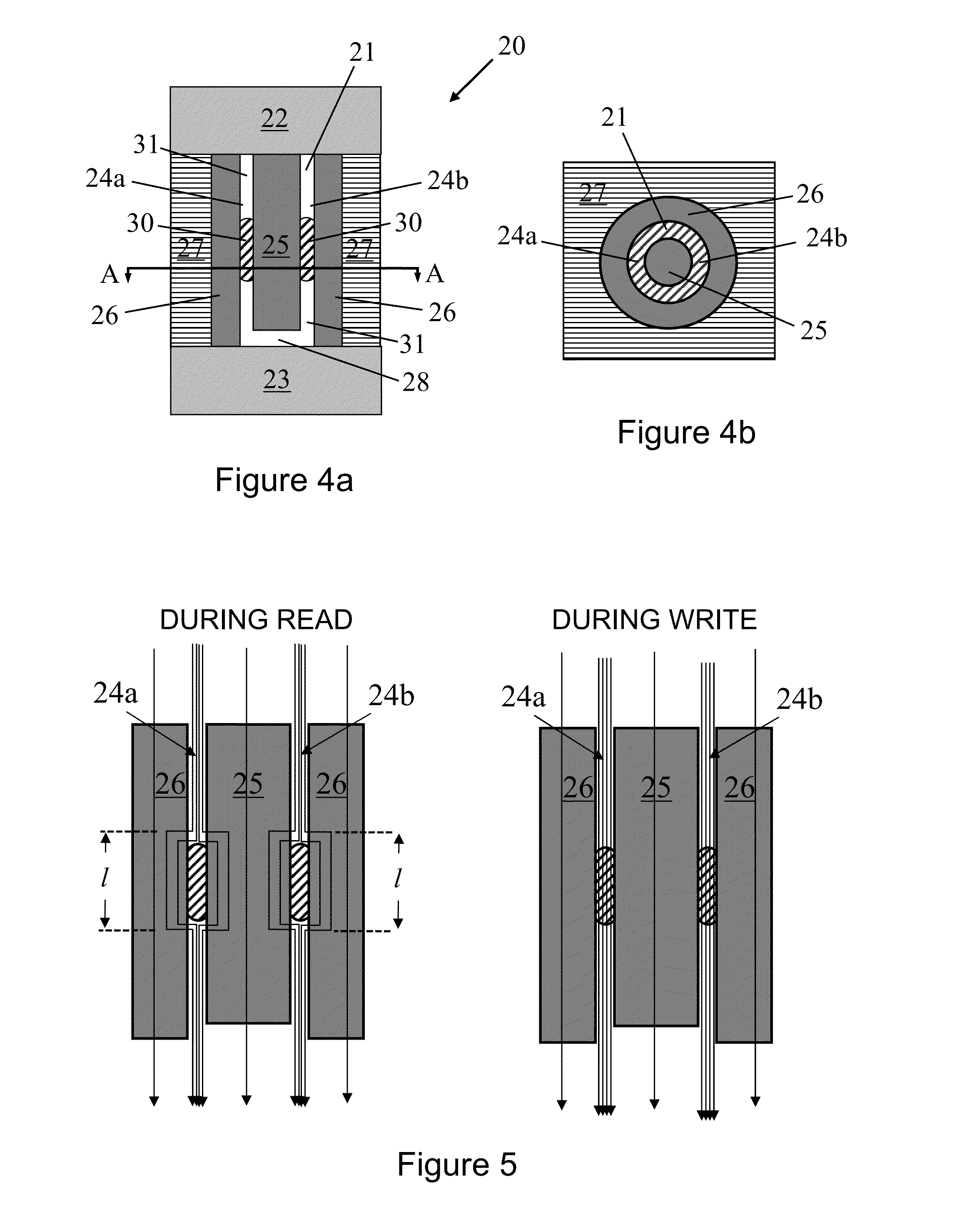Phase-change memory cells
a memory cell and phase-change technology, applied in the field of phase-change memory cells, can solve the problems of destroying information, amorphous phase of phase-change materials showing undesirable attributes, and complicating the read out of stored information
- Summary
- Abstract
- Description
- Claims
- Application Information
AI Technical Summary
Benefits of technology
Problems solved by technology
Method used
Image
Examples
Embodiment Construction
[0039]Preferred embodiments of the invention will now be described, by way of example, with reference to the above-mentioned drawings.
[0040]In PCM cells embodying the invention, the phase-change component has opposed layers of phase-change material extending in a direction between the electrodes. The core component is located on the inside of these opposed layers and the outer component is located on the outside of the opposed layers, each of these two components extending in a direction between the electrodes. At least one of these two components is arranged to present a lower-resistance path to the cell read current than the amorphous phase of the phase-change material. The arrangement is such that the length of this current path depends on size of the amorphous phase in the opposed layers, and thus on programmed cell state. Embodiments of the invention may offer high-performance PCM cells with reduced dimensions.
[0041]The PCM cell volume is determined by the thickness of the oppo...
PUM
 Login to View More
Login to View More Abstract
Description
Claims
Application Information
 Login to View More
Login to View More - R&D
- Intellectual Property
- Life Sciences
- Materials
- Tech Scout
- Unparalleled Data Quality
- Higher Quality Content
- 60% Fewer Hallucinations
Browse by: Latest US Patents, China's latest patents, Technical Efficacy Thesaurus, Application Domain, Technology Topic, Popular Technical Reports.
© 2025 PatSnap. All rights reserved.Legal|Privacy policy|Modern Slavery Act Transparency Statement|Sitemap|About US| Contact US: help@patsnap.com



